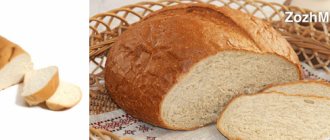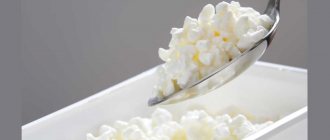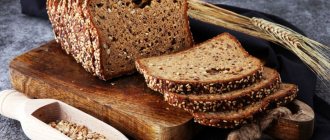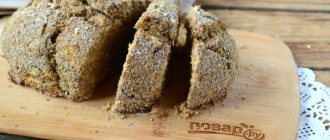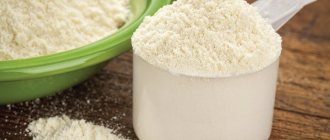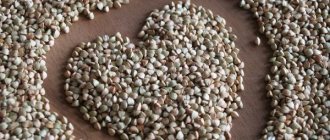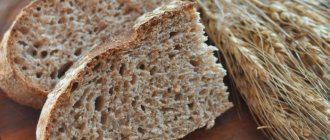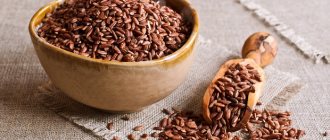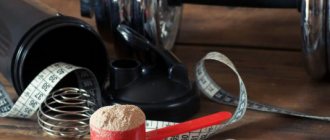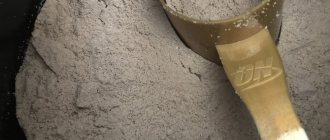© grafvision — depositphotos.com
Share:
Among the eating habits of Europeans, along with excessive consumption of sugar, is a commitment to baking. Having high nutritional value and being a source of carbohydrates, bread has long become one of the main sources of calories, which is associated with many proverbs and sayings. What are the real benefits and harms of bread? How much should I use it? Let's look at these questions in more detail.
General information
Before considering the benefits and harms of bread for the body, you need to make one important note. The article will focus mainly on home-made bread, and not on store-bought bread. The main reason is that you cannot be sure of the final composition and quality of the product from your nearest bakery.
To reduce the cost of production, factories resort to various tricks that partially neutralize the beneficial properties and increase the negative impact. For example, palm oil is used as fat (it is much cheaper than vegetable oil) or premium flour is added to bread, which is considered whole grain, which increases the glycemic index of the product.
Bread is a product made from flour by heat treatment. Bread is one of the most famous sources of fast carbohydrates and an element of energy replenishment in our body.
The key feature of bread is that when digested, it breaks down not into glucose, but into the starch that precedes it. However, it is easily subjected to mechanical action (chewing food), due to which starch is easily transformed into maltodextrin (a product with a glycemic index exceeding glucose).
Unlike other products, bread is a multi-component product, so its benefits are comparable to eating cereals, thanks to:
- Relatively high content of vegetable protein.
- The presence of natural Omega 6 fatty acids.
- Carbohydrates whose glycemic index varies depending on how the bread is prepared.
- A large number of minerals and vitamins.
- A large amount of fiber, which helps improve digestive processes.
Fiber deserves special attention, as it helps avoid unpleasant consequences from overconsumption of protein.
Depending on the recipe, bread is traditionally divided into:
- Yeast-free bread. Made from premium flour. The key feature is the absence of yeast and, as a result, phytoestrogens.
- White bread made from premium flour. It has the highest glycemic index and the lowest content of vitamins and minerals.
- White bread made from wholemeal flour. Fiber and more vitamins are retained.
- White bread made from whole grain cereals. Bread with an extremely low glycemic index. Has low nutritional value.
- Loaf. A product that cannot be considered bread in the classical sense, since it contains many additives.
- Rye bread. Made from rye flour, it has a lot of vitamins and fiber.
- Protein bread. A separate type of whole grain bread with the addition of an increased amount of eggs and other protein products (for example, cottage cheese).
© Ksena-Shu — depositphotos.com
Let's highlight 4 main groups:
- Yeast-free bread.
- White bread.
- Rye bread.
- Protein bread.
Note: the table is for informational purposes only and the amount of nutrients in each individual loaf of bread may vary up or down.
| Bread | Cereals used | Calorie content | Squirrels | Fats | Carbohydrates |
| Yeast-free | Wheat flour | 290 | 6,5 | 2,0 | 40 |
| White | Premium wheat | 342 | 8,1 | 1,0 | 48 |
| Rye | Rye flour | 250 | 13 | 3 | 40 |
| Protein | Variable | 180 | 26 | 2 | 25 |
© CssAndDesign - depositphotos.com. Composition of white bread per 100 g
Summarize
- Some types of bread are healthier than others.
- To choose the healthiest bread, look for options made with 100% whole wheat flour and/or sprouted grain flour. Make sure your bread does not contain sweeteners or vegetable oils.
- A few good options include sourdough, rye, flax and oat bread.
- Whatever you choose, remember to eat bread in moderation as part of a balanced diet, along with a variety of nutritious whole foods.
Bread
Harm or benefit?
Let's take a closer look at what harm and what benefits bread can bring, regardless of its composition:
| Benefit | Flaws |
| Bread is one of the most accessible sources of carbohydrates. | Bread has a high glycemic index, which excludes its use when drying or losing weight. |
| The cereal used for cooking contains many vitamins and minerals. | Bread has the ability to retain fluid in the body due to the sodium it contains. |
| Due to the fiber contained in bread, it takes longer to digest, therefore, allowing you to feel full longer. | The fatty acids included in the composition acquire a completed form during the cooking process, which reduces their benefits to zero. |
| Bread contains a large amount of vegetable protein. | The protein has an incomplete amino acid profile. |
Myth. Bread contains gluten - poison for the intestines, liver and gallbladder
In fact. Gluten, or gluten, is a group of proteins found in wheat, rye, barley, and other grains. People with celiac disease (celiac disease) should exclude this substance from their diet. Everyone else need not worry. Gluten, like other plant proteins, is a source of essential amino acids.
100 types of bread. How does matzo differ from tortilla and pita bread? Read more
Yeast-free bread
Yeast-free bread is traditionally considered the healthiest among all. After all, his recipe does not contain yeast, a source of phytoestrogens that negatively affect the athlete’s body. But is it really that simple? In the process of preparing such bread, sourdough is used, which must be quenched with soda. This creates additional hassle. Such bread is enriched with sodium, which retains liquid and therefore interferes with drying. This bread contains less protein and more fat, which gives the bread its unique taste.
The main advantages of yeast-free bread are the minimal presence of additional stabilizers and low calorie content. But the greatest harm lies in water retention. In addition, soda reacts with the stomach environment, increasing its acidity, which increases appetite and can lead to gastrointestinal problems.
Note: naturally, we are talking about harm only if you consume a large amount of yeast-free bread.
© Milkos — depositphotos.com
Rye bread
Rye bread is most popular among people trying to lose weight. And it’s not surprising, because its calorie content is 30% less than that of white bread made from fine flour. It itself is made from a different type of flour, which makes it more resistant to mold. However, rye has a highly acidic environment, which, despite its relatively low glycemic index, irritates the gastric mucosa.
In addition, rye bread has lower bioavailability of nutrients due to its high fiber content, which reduces the absorption of nutrients. On the other hand, bioavailability is compensated by the high content of minerals, protein, and vitamins. With all its pros and cons, this is a priority source of “bread” calories.
© spotty — depositphotos.com
Production: yeast, improvers
It is no secret that the conditions for growing grain crops and the technological processes for making bakery products have changed greatly, and the product itself has changed accordingly.
Grain crops are grown in fields fed with various chemicals, including pesticides. Wheat is often genetically modified to increase its gluten content.
Manufacturers' tricks aimed at reducing the cost of the final product neutralize its most valuable properties.
However, we note:
The use of pesticides occurs when growing not only grains, but many other crops. For example, watermelon: the benefits and harms of which for the human body sometimes outweigh each other. You should also choose it carefully, with knowledge of the matter. Among genetically modified plants/vegetables we can name corn, potatoes, soybeans, paprika, sugar beets, and others.
Genetically modified microorganisms are used in the production of dairy products, including yoghurts and cheeses.
Yeast
Bread with yeast has been baked since the times of Ancient Egypt. The fermentation process determined the taste, splendor, and aromatic qualities of baked goods.
of baker's yeast in modern technologies , which are supposedly thermophilic (surviving at high temperatures). And when they enter the human body, they settle there, multiply, and cause damage:
- Disturbing the natural microflora.
- Suppressing immune forces.
- Giving rise to all sorts of ailments.
- Acidifying the environment, which is favorable for the settlement of parasites.
- Poisoning the “carrier” with waste products.
- Consuming substances needed by the body.
- By increasing cell permeability, which gives carte blanche to various pathogens, including viruses. Provoking herpes rashes on the lips.
- In addition, yeast, like other fungi, are capable of producing antibiotics, which, among other things, reduces the effectiveness of the use of antibacterial drugs in the treatment of diseases. The topic of Antibiotics and Superbugs has been discussed in detail previously.
Do yeast and their spores die when baking bread products (oven temperature is 200-220°, and the crumb in the loaf is 98°C)? To date, the survivability attributed to them is still only a theory, a hypothesis. There is not a single conclusive experiment, discovery, or fact.
In addition, our body is already populated by a mass of fungi, bacteria, and other microorganisms.
It is also argued that yeast is harmful because it is produced on the basis of raw materials, most of which are not food grade . Namely: heavy metals, chemical components.
However, it is known that:
Pesticides, heavy metals, and toxic products are present in a wide variety of plant materials grown near industrial enterprises; water, soil.
Lead and cadmium were found in chocolate from seventeen of the largest well-known brands.
Heavy metals are also found in legumes, sugar, dairy products, oils, vegetables, fruits, berries, meat, poultry, and fish.
In addition, it makes sense to take into account the following:
- In addition to bread yeast, we also get milk, wine, and beer yeast from our food.
- All of them are rich in vitamins, amino acids, minerals, and improve the absorption of many nutritional components.
- The miraculous effects of yeast masks for the face and hair should not be overlooked.
Improvers
The task of bakery product manufacturers is to sell their products. To increase shelf life, suppress bacteria, fungi, mold, improve the appearance and taste of the product , various additives are used, which simultaneously harm the health of consumers:
- Preservatives.
- Food colorings.
- Flavors are often unnatural.
To be fair, it should be said that the same substances can be observed in confectionery, meat, and other food products.
When purchasing low-quality but cheap grain, it is enriched with anti-caking agents, antioxidants , and other improvers.
Flour is bleached with aggressive substances.
For comparison, let's look at sugar; olives that are turned into olives.
A modern bakery product contains a large list of various components labeled “E”.
“Eshki” are found in almost all current products: from fish and canned meat to confectionery.
Vegetable oils are used , firstly, not the most healthy, and secondly, when heated, they form carcinogenic substances.
Each of us can recall a lot of examples of heating oils in the preparation of lunches and dinners for the family, as well as used in the manufacture of some purchased provisions.
Unfortunately, almost all products created using modern technologies contain modified fats and palm oil.
Gluten is a sticky protein.
There is especially a lot of it in a wheat loaf. But it is also present in rye, oats, and barley.
Used in the manufacture of:
- Products of meat processing plants.
- Yoghurt, ice cream, chocolate, syrups.
- Beer, whiskey, vodka.
- Medicines, vitamins in capsules.
- Mayonnaise, ketchup.
- Crab sticks.
- Pasta products.
- Semi-finished products.
- Cakes, cookies, waffles, sweets.
- Lavash.
- Chips.
The substance is used as an adhesive, increases elasticity, or as a thickener.
Knowing about the possible pitfalls, you should make a more careful choice for your table.
White bread
Considering wheat bread, its benefits and harms, we will move away from classical myths.
Let's start with the cons:
- White bread has the highest glycemic index. This makes it difficult to follow low-calorie diets because... after quick satiety comes a quick feeling of hunger.
- Yeast, which is part of white bread, not only acts as the main source of phytoestrogens, but also removes calcium from the body.
- Traditionally, such bread is made from the highest grade flour, which is completely devoid of beneficial micronutrients and fiber. Consequently, such bread can harm the digestive system.
- Due to its high glycemic index and load, it not only loads the liver, but also increases the acidity of the stomach. This bread is not recommended for people suffering from gastritis or peptic ulcers.
And now the advantages of white bread.
- This is the highest calorie source of carbohydrates, which makes it easy to add calories when working on weight.
- This is a good dopamine stimulant.
- Among the classic types of bread, it has the most protein.
- It breaks down not into glucose, but into starch, which, despite its high GI, allows you to supply the body with energy longer than other sources of “bread calories”.
© spotty — depositphotos.com
Myth. Bread provokes type 2 diabetes, increases weight
In fact. They gain weight not from carbohydrates, but from their quantity. The need for carbohydrates for any person is 50–60% of daily calories. But carbohydrates are different from carbohydrates. Those who want to lose weight should choose complex, “slow” carbohydrates that do not lead to a sharp jump in blood sugar and give a long-lasting feeling of fullness. And added sugar should be limited to 10% of daily calories. Black and gray bread is useful for dieting: it is rich in dietary fiber and gives a long-lasting feeling of fullness.
Diabetes is not caused by bread, but by excess food, which leads to the formation of fatty tissue in the body. Bread, primarily rye, in acceptable quantities protects against diabetes: it is rich in dietary fiber, valuable for people with impaired carbohydrate and lipid metabolism.
Protein bread
Considering baking as a whole, it is easy to identify the main disadvantages:
- Low protein content.
- Irritation of the gastric mucosa.
- Low content of vitamins and other macroelements.
- High GI.
But if you love bread and are serious about sports, you should pay attention to protein bread.
Its composition:
- wholemeal flour;
- egg white;
- cottage cheese;
- almond;
- flax seeds.
Conclusion: protein bread is an ideal solution for athletes:
- Low calorie product. Allows you to safely consume large amounts of protein bread without the risk of slowing down weight loss.
- High content of complex protein. It is especially important when working with high-quality mass or during intensive drying.
- Low sodium. Practically does not retain water.
- Large amount of calcium. Even if such bread contains yeast, calcium more than compensates for it.
- Presence of Omega 3 polyunsaturated fatty acids. This is especially important since the main disadvantage of the dietary habits of modern people is a deficiency of Omega 3 acids, which disrupts the synthesis of “good” cholesterol and reduces the potential level of testosterone.
- Low glycemic index, which allows this bread to be considered a “complex carbohydrate”.
This bread will be an ideal solution for people leading a healthy lifestyle, although when consuming it you should:
- Additionally, consume carbohydrates from cereals.
- Watch the sources of protein (in stores, soy protein, rich in phytoestrogens, is often used instead of cottage cheese).
© — depositphotos.com
Otrubnoy
It is also worth noting with attention, talking about which bread is the healthiest. Bran bread is enriched with vitamins. It is useful for the following reasons:
- The dietary fiber it contains cleanses the body of toxins and has a preventive effect against atherosclerosis.
- Treats constipation and prevents its occurrence.
- With moderate consumption and a well-designed diet, it helps to lose weight.
- Cleanses the walls of the digestive organs and makes the stomach work.
- Increases hemoglobin levels and improves blood composition. Bran bread is especially recommended for people with iron deficiency anemia.
- Coarse fibers remove excess substances from the intestines. It should be eaten by people with allergies, skin problems, acne, hair loss and fungal diseases.
In short, bran bread is a natural adsorbent. Not without its drawbacks, of course. Many consider its taste to be a significant disadvantage - not everyone likes it. Bran bread is coarser and rougher than regular bread, less fluffy and airy. And sometimes there is even bitterness - but this is if low-quality bran was used.
Which one is healthier?
It is impossible to say unequivocally that white bread is worse than rye bread. They differ in their composition, in the amount of incoming nutrients and macroelements. However, if we consider the benefits of bread in terms of use in sports, we can highlight the following parameters:
- Glycemic index.
- Glycemic load.
- Percentage of protein to total product.
- Percentage of polyunsaturated fatty acids.
- Presence of yeast.
- Fiber content to total carbohydrates.
According to these parameters, consider the table of the described types of bread:
| Bread | Glycemic index | Glycemic load | Protein percentage | Fats | Yeast | Cellulose |
| White yeast | High | Over 40 | 6,5 | 2,0 | Present | Low content |
| Yeast-free | Low | From 30 to 40 | 8,1 | 1,0 | absent | Average content |
| Protein | Extremely low | From 25 to 30 | 13 | 3 | Present | Average content |
| Rye | Short | From 35 to 45 | 26 | 2 | Present | High content |
Based on the available data, we conclude that protein bread will be the most beneficial for an athlete. In second place is rye, in third place is yeast-free. But according to these parameters, classic white bread is the most useless.
© annyart — depositphotos.com
Diet bread
The breads are very popular. Their use helps remove toxins and normalize intestinal function. Several types of bread are known. The most popular ones include:
- Buckwheat: have a good effect on the absorption of food, saturate for a long time, stimulate secretion. Useful for diabetics, as well as for people losing weight.
- Wheat bread is rich in fiber and goes well with first and second courses. Serve as an excellent snack for those losing weight.
- Rye helps remove waste and toxins from the body. Used for weight loss purposes.
The calorie content of the bread is almost the same as that of regular bread. But they can bring much more benefits, because... prepared without yeast and only from whole grain flour.
There are contraindications only for people who have an individual intolerance to the product.
What to look for when purchasing?
If you decide to buy bread at your local store, you should pay attention to the following factors when purchasing:
- Best before date. Of course, everyone loves fresh white yeast bread, but due to the processes occurring in it, it is somewhat more harmful than the same bread that sits on the shelf for 1-2 days.
- Real content of BJU.
- Calorie content.
- Features of the composition.
And remember that good store-bought bread quickly becomes moldy. If your bread has been sitting for more than 3-4 days and has not started to mold, then there are questions regarding the purity of its composition.
For weight loss
Many people believe that it is impossible to maintain a slim figure by eating flour products every day. This is a false opinion, since there is bread that is good for weight loss.
Completely avoiding baked goods can have a detrimental effect on your health. Once you are determined to eat right, you should just give up wheat loaves and rolls, because wheat flour loses almost all its beneficial substances after processing.
It is harmful for the body to eat bread whose ingredients have undergone long technical processing.
Losing weight consumers are better off focusing on whole grain bread or products with added bran. Bran will fill the body with energy and satisfy the feeling of hunger for a while. And baked goods made from whole grain flour will become a treasure trove of nutrients and vitamins for the body.
In pursuit of a slim body when consuming baked goods, it is worth remembering a few simple rules:
- consume only a couple of slices a day, and in the first half of the day;
- give preference to products prepared without adding yeast;
- Avoid products based on wheat flour.
How much to consume per day?
There are no clear recommendations for the consumption of bread. Depending on your goals and the specifics of your current diet, the amount varies. On average, bread consumption is calculated as follows:
- No more than 100 g of net carbohydrates per meal (equivalent to 150 to 200 g of bread).
- Bread calories should not account for more than 40% of the total carbohydrate intake.
- For weight gain: the total amount of carbohydrates should be about 5 g per kg of net weight.
Nutritional recommendations
Always remember that bread is a carbohydrate with a high glycemic index. Based on this, follow certain recommendations:
- Do not consume more than 150 g of bread at one sitting.
- Do not combine bread with fats. It is worth giving up butter and mayonnaise with bread, since under the influence of an intense insulin reaction, fats spread in a thick layer are immediately transported to the fat depot, instead of benefiting the body.
- The glycemic index largely depends on how thoroughly you chew your bread.
Using these simple recommendations, you will increase the benefits of eating any type of bread and neutralize its disadvantages.
Recipes for healthy eating
Halibut in a frying pan
- 13.1 g Protein
- 12.9 g Fat
- 8.6 g Carbohydrates
- 200.5 kcal
25-30 min.
- #avocado
- #second course
- #lemon
- #flour
- #dinner
- #roasting
- #olive oil
- #tomato
- #vegetable oil
- #fish
- #spices
- #dinner
Other recipes
Your own baker
Tired of store-bought loaves? Try baking bread at home. It's not difficult, and you can try non-trivial recipes.
Gluten-free buckwheat bread
Ingredients : buckwheat flour – 350 g, cold water – 750 g, egg – 2 pcs., dry yeast – 20 g, sesame – 10 g, fried onion – 50 g, vegetable oil – 30 g, sugar – 20 g, flax seeds – 10 g, apple cider vinegar – 5 g.
How to cook : mix all ingredients and knead the dough. It is important to use cold water so that you have time to knead the dough before fermentation begins (if you use warm water, the dough will turn out loose and will be inconvenient to work with). Let the dough rise in a warm place for 1 hour. Place the dough in a baking dish or simply on a baking sheet. Bake in the oven for 20 minutes at 200°C. After baking, let the bread “rest” - cool. Please note: gluten-free bread will be denser than wheat bread.
Palm bread with nettles
Ingredients : wheat flour – 250 g, palm flour (sago) – 250 g, water – 150 ml, salt – 6 g, sugar – 10 g, yeast – 7 g, dried nettle – 50 g.
How to cook : prepare a dough using ⅓ part wheat flour and ⅓ part palm flour, water, sugar, yeast and salt. Let rise for 2 hours. Add the remaining flour, knead and let rise for another half hour. Knead 3 times and let the dough rise. Divide the dough into equal balls and bake at 180˚C for 15 minutes. Grind the nettles and sprinkle on the finished bread.

